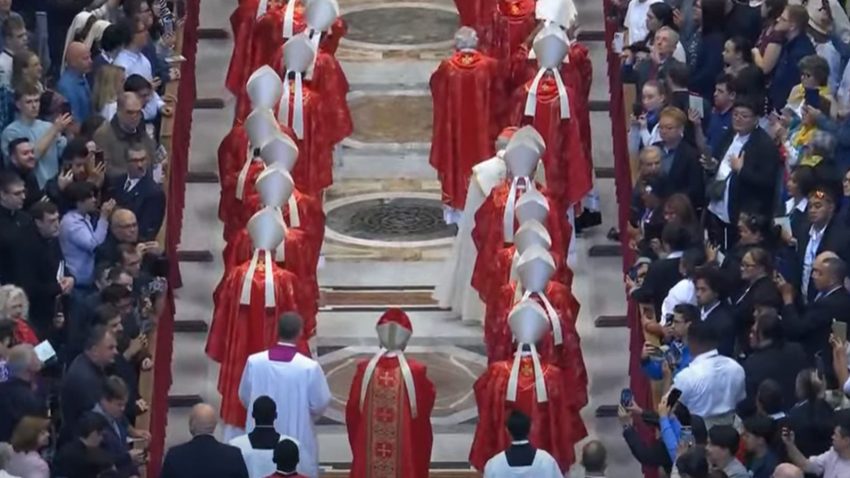After a pope’s death, cardinals travel to Rome from all over the world and stay until a new pope is chosen.
Of the 252 current ones, there are 133 cardinal electors: 52 from Europe; 23 from Asia; 20 from North America; 17 from Africa; 17 from South America; and four from Oceania.
Italy has the most cardinals who can vote, with 17, while the US has 10 and Brazil has seven. The UK has three.
Once the conclave begins, the cardinals will not emerge from the Vatican until a new pope has been chosen. The word “conclave” comes from Latin, meaning “with key” – a reference to the isolation in which the cardinals are kept.
Once everyone is inside the Sistine Chapel, it will be pronounced the “Extra Omnes!” (from Latin, meaning “Everyone else out!”) and from that moment the cardinals won’t have any contact with the outside world.
Anyone who tries to interfere with the conclave faces excommunication – officially being excluded from the participation in the sacraments and services of the church.
While holding voting sessions in the Sistine Chapel, they sleep in the Casa Santa Marta – a guesthouse inside the Vatican’s grounds.
How long can it last?
The longest conclave lasted almost three years, between 1268 and 1271.
Several have lasted only one day.
The most recent conclaves – for Pope Francis in 2013, Pope Benedict XVI in 2005 and Pope John Paul II in 1978 – all lasted less than three days.
Except for the first day, when only one ballot is held, the cardinals hold four daily votes – two in the morning, two in the afternoon – until one candidate has a majority of two-thirds plus one. In this case the required number is 89.
The cardinals are sworn to secrecy about the voting.
How do we know if a decision has been reached?
Yes, this is the black smoke, white smoke part.
If the cardinals have not reached a majority, the cards and the tally sheets are placed in a stove and burned with an additive to produce black smoke, showing the outside world that a pope has not yet been chosen.
For black smoke, the ballots are mixed with cartridges containing potassium perchlorate, anthracene (a component of coal tar), and sulphur. For white smoke, the burning ballots are mixed with potassium chlorate, lactose and chloroform resin.
Watching for the tell-tale smoke arising from the top of the Sistine Chapel is a tradition, with Catholics crowding into St Peter’s Square for the spectacle.
If no result has been reached after three days, the sessions are suspended for a day to allow for prayer and discussion. More ballots are held until a two-thirds majority is reached.
When enough cardinals have agreed on a candidate, he is asked if he accepts the papacy and by which name he wishes to be known.
The ballots are burned as before, but with an additive to produce white smoke.
Read more here…
